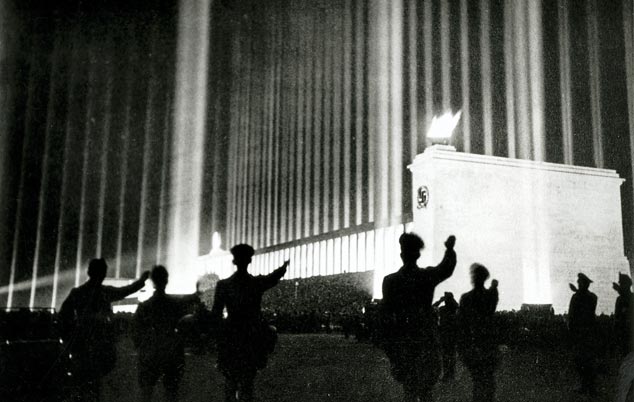
The Nazi Party Rallies serve to present the Nazi regime's self-image both domestically and abroad, and are intended as an embodiment of the "Volksgemeinschaft" and the "Führer" myth. Parades, omnipresent uniforms, and military displays are directly related to the Nazi state's preparations for war. First and foremost, however, the Nazi Party Rallies appeal to the participants' and spectators' emotions. Here politics are conceived not as something to be thought out and understood, but as an "experience."
Stagecraft becomes a political message. Party Rallies have followed essentially the same ritual ever since 1933. The days are filled with mass parades, military maneuvers, speeches, meetings of the National Socialist organizations, propaganda exhibitions, folk festivals, fireworks, concerts and opera performances.
The National Socialists draw on a wide range of traditions for their self-portrayal. Christian and conjectural Germanic customs are part of the mix, along with military rituals, aspects of bourgeois festival culture, political forms of expression from the labor movement, and the celebrations of Italian fascism.



